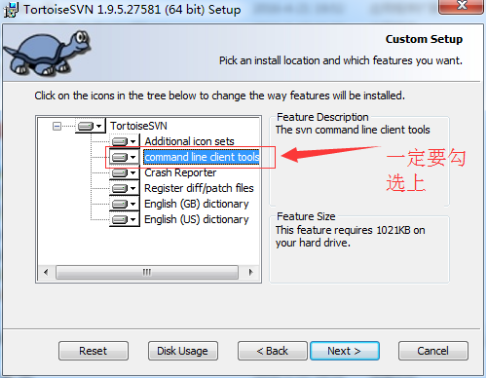前后端分离-crud&svn
前后端分离-crud&svn
1. 跨域
1.1 什么是跨域
请求方与服务方的源不同,即跨域,包括:
1. 协议不同
2. 域名不同
3. 端口不同
1.2 跨域不一定存在跨域问题
什么情况下存在跨域问题:
<a href="www.jd.com">
跨域问题: 浏览器 针对ajax请求的时候,如果不同的服务,存在跨域
浏览器机制: 同源策略拦截跨域的访问
1.3 解决跨域的方法
(1) jsonp方式 --json变种
localhost/department/list -- > <scprit src="/localhost/department/list">
缺点:
需要服务支持
只能发起GET请求
(2) nginx 反向代理
(3)方案3 -- 服务器允许cors这些请求
什么是cors?
同源(相同协议,相同域名,相同端口)
cors: 一个w3c标准 跨域资源共享"(Cross-origin resource sharing)
服务器怎么允许这些 / get/post/delete/put/options /patch
cors解决跨域方案:
(1)写一个配置类(针对spring4.2以下版本)
package cn.itsource.crud.config;
import org.springframework.context.annotation.Bean;
import org.springframework.context.annotation.Configuration;
import org.springframework.web.cors.CorsConfiguration;
import org.springframework.web.cors.UrlBasedCorsConfigurationSource;
import org.springframework.web.filter.CorsFilter;
@Configuration
public class GlobalCorsConfig {
@Bean
public CorsFilter corsFilter() {
//1.添加CORS配置信息
CorsConfiguration config = new CorsConfiguration();
//1) 允许的域,不要写*,否则cookie就无法使用了
config.addAllowedOrigin("http://127.0.0.1:8080/");
config.addAllowedOrigin("http://localhost:8080/");
//2) 是否发送Cookie信息
config.setAllowCredentials(true);
//3) 允许的请求方式
config.addAllowedMethod("OPTIONS");
config.addAllowedMethod("HEAD");
config.addAllowedMethod("GET");
config.addAllowedMethod("PUT");
config.addAllowedMethod("POST");
config.addAllowedMethod("DELETE");
config.addAllowedMethod("PATCH");
// 4)允许的头信息
config.addAllowedHeader("*");
//2.添加映射路径,我们拦截一切请求
UrlBasedCorsConfigurationSource configSource = new
UrlBasedCorsConfigurationSource();
configSource.registerCorsConfiguration("/**", config);
//3.返回新的CorsFilter.
return new CorsFilter(configSource);
}
}
或者
(2)spring通过注解支持
CrossOrigin 注意: 4.2版本以后支持
一个注解解决(可以加在类或者方法上面)
@CrossOrigin
2. 前端crud主要代码
2.1 新增

addSubmit: function () { this.$refs.addForm.validate((valid) => { if (valid) { this.$confirm('确认提交吗?', '提示', {}).then(() => { this.addLoading = true; let para = Object.assign({}, this.addForm); this.$http.put("/department/save", para).then(res => { this.addLoading = false; let {success, msg} = res.data; if (success) { this.$message({ message: msg, type: 'success' }); } else { this.$message({ message: msg, type: 'error' }); } this.$refs['addForm'].resetFields(); this.addFormVisible = false; this.getDepartments(); }); }); } }); }
2.2 修改

editSubmit: function () { this.$refs.editForm.validate((valid) => { if (valid) { this.$confirm('确认提交吗?', '提示', {}).then(() => { this.editLoading = true; let para = Object.assign({}, this.editForm); // editUser(para).then((res) => { this.$http.post("/department/save", para).then(res => { let {success, msg} = res.data; if (success) { this.$message({ message: msg, type: 'success' }); } else { this.$message({ message: msg, type: 'error' }); } this.editLoading = false; this.$refs['editForm'].resetFields(); this.editFormVisible = false; this.getDepartments(); }); }); } }); }
2.3 删除

handleDel: function (index, row) { this.$confirm('确认删除该记录吗?', '提示', { type: 'warning' }).then(() => { this.listLoading = true; this.$http.delete("/department/" + row.id).then(res => { this.listLoading = false; let {success, msg} = res.data; if (success) { this.$message({ message: msg, type: 'success' }); } else { this.$message({ message: msg, type: 'error' }); } this.getDepartments(); }); }).catch(() => { }); }
2.4 查询

getDepartments() { let para = { page: this.page, name: this.filters.name }; this.listLoading = true; this.$http.patch("/department/list").then(res => { this.total = res.data.length; this.departments = res.data; this.listLoading = false; }); }
3. svn
3.1 安装svn
首先我们需要下载一个 svn的客户端
我们用的是TortoiseSVN(小乌龟),下载后安装 ,然后记住安装路径
官网下载地址:https://tortoisesvn.net/downloads.html
3.2 安装svn客户端
在安装svn客户端的时候一定要勾选,否则在idea上集成svn的时候会找不到 svn.exe 而报错。
如果安装时忘记勾选了的话,安装包重新运行,选择modify,然后勾选command line client tools项就行了。

3.3 操作svn
1)创建仓库

2)检出
代码
3)提交/更新
4)处理冲突
什么情况 会存在冲突?
多个人在去修改同一个文件的,如果修改的版本号不一致 就可以出现
5)idea操作svn
import
check out




 浙公网安备 33010602011771号
浙公网安备 33010602011771号